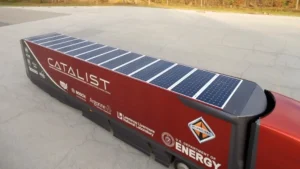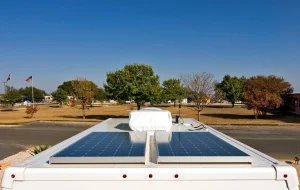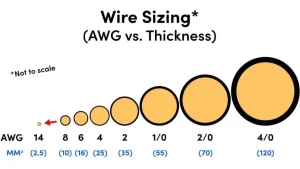Navigating the world of solar panels can feel, for the uninitiated, like a foray into an arcane science, particularly when confronted with the bewildering question of requisite power size in this Solar Panel Sizing Guide. One is hardly alone in this bewilderment; indeed, countless homeowners find themselves in a similar quandary, attempting to translate their daily energy rhythms into the esoteric language of kilowatts. Fear not, however, for by the conclusion of this brief Solar Panel Sizing Guide, a clearer path towards an informed decision shall reveal itself.
Demystifying Solar Panel Sizing: A Prolegomenon to Powering Your Abode
The allure of solar energy is undeniable, a promise of self-sufficiency and a cleaner conscience. Yet, the initial hurdle often manifests as a seemingly simple query: “Precisely what scale of solar apparatus does my dwelling require?” This is, to be sure, a commonplace dilemma, and its resolution is anything but universal. Rather, it hinges upon a nuanced understanding of your home’s distinct energetic footprint.
Appraising Your Home’s Energetic Palate: The Consumption of Common Household Devices
Let us commence by observing the power consumption of typical domestic contrivances, thereby establishing a foundational understanding of your energy demands. The power drawn by an appliance is, as a rule, quantified in watts (W).
Herein lies a concise catalogue of familiar appliances and their approximate power draw (these figures represent averages and are subject to variation depending on model and efficiency):
- Illumination:
- LED Bulb: 5-15 W
- CFL Bulb: 10-25 W
- Culinary Apparatus:
- Refrigerator: 100-400 W (when the compressor is engaged)
- Microwave: 600-1500 W
- Toaster: 800-1500 W
- Electric Kettle: 1000-3000 W
- Dishwasher: 1200-2400 W (during heating cycles)
- Laundering Mechanisms:
- Washing Machine: 500-2000 W (during heating cycles)
- Clothes Dryer (Electric): 1800-5000 W
- Diversions & Scholarly Pursuits:
- Television (LCD/LED): 50-200 W
- Desktop Computer: 60-300 W
- Laptop: 20-50 W
- Game Console: 50-200 W
- Thermal Regulation (Prodigious Power Users):
- Central Air Conditioner: 1000-5000 W (or more, depending on scale)
- Space Heater: 1000-1500 W
- Water Heater (Electric): 2000-5000 W
A Crucial Caveat: Appliances, it must be noted, do not operate incessantly. A refrigerator, for instance, engages and disengages its compressor throughout the day. Your objective, then, is to approximate your aggregate daily energy consumption in watt-hours (Wh) or, more grandly, kilowatt-hours (kWh).
To achieve this, one multiplies the appliance’s wattage by the diurnal hours of its operation.
- Illustrative Example: A 100W television, enjoyed for four hours each day, will draw 100 W×4 h=400 Wh within that twenty-four-hour period.
Summing the daily watt-hours for all your household appliances will yield a robust estimation of your comprehensive daily energy requirements. This information can often be gleaned from your electricity bill (look for average daily or monthly kWh usage) or by employing a specialized energy monitor.
Ascertaining the Appropriate Solar Panel Dimensions: From Consumption to Production
Having cultivated a firm understanding of your household’s daily power consumption, one may then turn to the matter of solar panel dimensioning. Solar panels are, as a rule, rated in watts (W), signifying their maximum power output under pristine conditions.
Herein lies the interpretive bridge:
-
Calculate Your Total Daily Energy Imperative: As elucidated previously, aggregate the daily Wh for all your appliances. Let us posit, for the sake of example, that your total accrues to 15,000 Wh, or 15 kWh, per diem.
-
Factor in Peak Sun Hours: Solar panels, it is imperative to acknowledge, do not perpetually produce their rated power. Their output fluctuates with the intensity of solar irradiance. “Peak sun hours” denote the equivalent number of hours daily during which solar irradiance averages 1,000 watts per square meter. This figure is contingent upon your geographic coordinates and the temporal progression of the year. One can typically ascertain average peak sun hour data for one’s specific region online (e.g., from reputable renewable energy repositories or qualified solar installers). For instance, a given locale might average 4-5 peak sun hours per day.
-
Account for Systemic Attenuation: Solar power systems, regrettably, do not operate with perfect efficiency. Variables such as ambient temperature, proximate shading, accumulated dust, resistive losses within wiring, and inverter efficiency all conspire to diminish the actual power output. A prudent estimate for such systemic losses generally ranges from 15-25%.
-
Compute the Requisite System Scale:
The formula, then, presents itself thus:
Let us apply this to our earlier example:
- Total Daily Energy Need: 15,000 Wh
- Average Peak Sun Hours: 4.5 hours
- Estimated System Loss: 20% (or 0.20)
This calculation suggests that a solar panel system with an aggregate capacity of approximately 4.17 kilowatts (kW) would be necessary to satisfy your daily energy requirements.
-
Determine the Appropriate Panel Count: Solar panels, by current convention, are typically available in capacities ranging from 300W to 450W (and, increasingly, higher). To ascertain the precise number of panels required, one divides the computed system size by the wattage of the chosen individual panel.
- Example: Should one select 400W panels, the calculation yields 4167 W/400 W/panel≈10.4 panels. Prudence, in this instance, would dictate rounding upwards to 11 panels to reliably fulfill your energy demands.
Rated Power Versus Average Actual Working Power: Expectations Versus Reality
It is paramount to grasp the distinction between a solar panel’s rated power and its average actual working power. This dichotomy often proves a source of mild confusion for the uninitiated.
-
Rated Power (STC – Standard Test Conditions): This figure, proudly advertised by the manufacturer (e.g., 400W), represents the panel’s maximum power output under exceedingly specific, idealized laboratory conditions (25∘C cell temperature, 1,000 W/m2 solar irradiance, and an air mass of 1.5). Such pristine circumstances, it must be acknowledged, are seldom replicated in the variegated landscape of real-world installations.
-
Average Actual Working Power: This refers to the power your solar panel system will, in actuality, generate on a typical day, taking into account a panoply of real-world variables:
- Temperature: Solar panels, rather counter-intuitively, exhibit a diminution in efficiency as their operating temperature ascends.
- Irradiance: The intensity of sunlight, a capricious element, fluctuates throughout the diurnal and annual cycles, to say nothing of the intercession of cloud cover.
- Shading: Even a partial obscuring of a single panel can, with surprising efficacy, substantially reduce the output of an entire string of interconnected panels.
- Panel Degradation: Solar panels, being physical artifacts, inexorably degrade over time, experiencing a marginal, yet measurable, decline in output each year.
- Dust and Detritus: The accumulation of particulate matter—dust, dirt, and sundry debris—upon the panel’s surface acts as a subtle, yet persistent, impediment to efficiency.
- Inverter Efficiency: The inverter, a crucial component responsible for transforming the direct current (DC) from the panels into the alternating current (AC) suitable for your home, is itself subject to inherent efficiency losses.
Owing to these various factors, your solar panels will, in all likelihood, rarely attain their full rated power. It is precisely for this reason that the “system loss percentage” within our foregoing calculation assumes such pivotal importance—it serves as a necessary acknowledgment of this real-world performance divergence.
Beyond the Arithmetical: Supplementary Considerations
While the aforementioned calculations furnish a robust foundation, it is prudent to also entertain the following:
- Your Roof’s Expanse: Does your abode possess sufficient unobstructed roof area to comfortably accommodate the calculated number of panels?
- Pecuniary Allocations: The cumulative cost of solar panels, inverters, and the intricate process of installation will assuredly represent a substantial financial commitment.
- Prospective Energy Demands: Are you contemplating the acquisition of an electric vehicle, an expansion of your dwelling, or the introduction of additional energy-intensive appliances in the foreseeable future? A slight oversizing of your system might, in such circumstances, prove a sagacious decision.
- Net Metering/Feed-in Tariffs: A clear comprehension of how your local utility remunerates you for any surplus energy remitted back to the grid is essential. This can influence whether your ambition leans towards absolute self-sufficiency or a periodic generation exceeding your consumption.
- Professional Appraisal: It is unequivocally recommended that one enlist the services of a qualified solar installer to conduct a meticulous site assessment. Such professionals possess the acumen to accurately evaluate your roof, assess potential shading, and furnish a precise system design coupled with a comprehensive cost estimate.
By embracing a thorough understanding of your energy consumption patterns and the myriad factors that impinge upon solar panel performance, you are, indeed, well on your way to selecting the ideal solar panel system—a felicitous convergence of efficiency and environmental stewardship—to illuminate your home. May your solar journey be one of serene and sustainable illumination.









